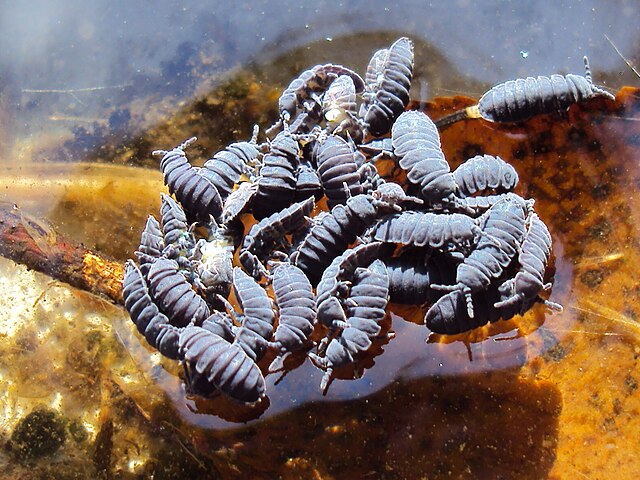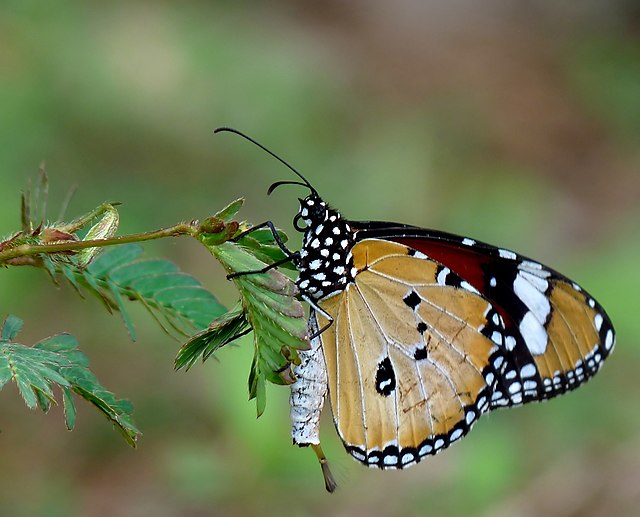Crematogaster is an ecologically diverse genus of ants found worldwide, which are characterised by a distinctive heart-shaped gaster (abdomen), which gives them one of their common names, the Saint Valentine ant. Members of this genus are also known as cocktail ants because of their habit of raising their abdomens when alarmed. Most species are arboreal (tree-dwelling). These ants are sometimes known as acrobat ants.
Crematogaster
Male caste of C. degeeri
Worker caste of C. corticicola
Arboreal carton nest of C. castanea
A pheromone is a secreted or excreted chemical factor that triggers a social response in members of the same species. Pheromones are chemicals capable of acting like hormones outside the body of the secreting individual, to affect the behavior of the receiving individuals. There are alarm pheromones, food trail pheromones, sex pheromones, and many others that affect behavior or physiology. Pheromones are used by many organisms, from basic unicellular prokaryotes to complex multicellular eukaryotes. Their use among insects has been particularly well documented. In addition, some vertebrates, plants and ciliates communicate by using pheromones. The ecological functions and evolution of pheromones are a major topic of research in the field of chemical ecology.
A fanning honeybee exposes Nasonov's gland (white – at tip of abdomen) releasing pheromone to entice swarm into an empty hive
Aggregation of bug nymphs
Aggregation of the water springtail Podura aquatica
Male Danaus chrysippus showing the pheromone pouch and brush-like organ in Kerala, India








